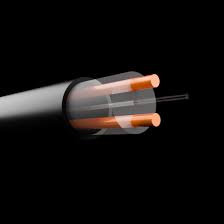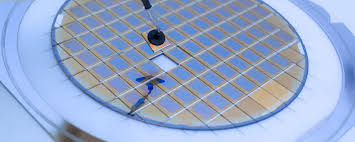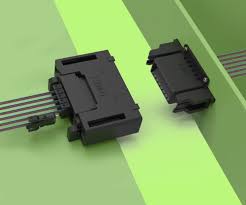MARKET OVERVIEW:
Global Optical Backplane Connectors market is estimated to reach $4829.2 Million by 2031; growing at a CAGR of 6.4% from 2024 to 2031.
The Global Optical Backplane Connectors market plays a vital role in ensuring efficient high-speed data transmission within electronic systems. These connectors are essential for linking different parts of a system and enabling data to flow seamlessly across components in industries such as data centers, telecommunications, and industrial automation. Optical backplane connectors transfer data using light instead of electrical signals, offering lower latency, signal loss, and higher energy efficiency compared to copper-based connectors. As demand for high-speed communication networks grows, these connectors will become increasingly important in sectors like server, network switch, and routers. With the rise of technologies like 5G and cloud computing, the need for optical backplane connectors in massive data centers and telecommunication systems will only increase.
Manufacturers will focus on improving design and functionality to meet the demands of modern communication systems, developing smaller connectors for even faster data speeds and higher signal integrity. The trend towards automation and the Internet of Things (IoT) will further drive the growth of the Global Optical Backplane Connectors market, as more connected devices demand reliable data transmission. These connectors will continue to evolve to provide better performance and reliability, shaping the future of high-speed data transmission and offering solutions for sectors needing large-scale data processing. The market potential for optical backplane connectors is expected to grow as they become increasingly essential in creating a more interconnected world with efficient data transmission solutions.

GROWTH FACTORS
The demand for optical backplane connectors is increasing due to the need for faster data transfer speeds and higher bandwidth in data centers and telecommunications networks. These connectors provide high-speed and reliable transmission over long distances, making them essential for modernizing data handling systems. The data center industry, especially with its large volume of information exchange, would greatly benefit from these technologies. Additionally, optical connectors are being adopted in high-performance computing and aerospace applications to enable faster and more efficient data transfer compared to traditional copper connectors.
Despite their advantages, there are challenges such as the high cost of installation and integration with existing infrastructure. However, advancements in optical communication technology are expected to drive the growth of the market in the future, making optical connectors more accessible to various industries.
Companies in sectors like telecommunications and automotive are likely to increasingly use optical backplane connectors, creating commercial opportunities and fueling market growth. As challenges are addressed, the market for optical backplane connectors is projected to expand significantly.

MARKET SEGMENTATION
By Type
The Global Optical Backplane Connectors market is seeing steady growth due to technological advancements and the increased use of high-speed data transmission in various industries. Businesses and industries are moving towards digitization, driving up the demand for reliable optical backplane connectors in systems like data centers, telecom networks, and high-performance computing infrastructures.
The market is segmented into Single-Mode Optical Connectors and Multi-Mode Optical Connectors, each serving different purposes based on distance and cost-effectiveness. Optical Fiber Backplane Connectors and Optical Ribbon Connectors are also available for heavy data throughput and maintaining signal integrity over long distances. The future demand for advanced optical connection technologies will be driven by cloud computing, 5G, and HD video streaming.
As digital infrastructure becomes more crucial, optical connectors will play a vital role in ensuring smooth communication across various sectors. The market is poised for continuous growth as the need for high-speed data transfer and new technologies continue to drive innovation in optical connectors.
By Material
The Global Optical Backplane Connectors market is experiencing significant growth due to the increasing need for faster data transmission in various industries. These connectors play a crucial role in creating efficient communication systems by connecting optical fibers in backplane designs.
The market is advancing with the introduction of new materials that enhance performance and reliability. The demand for faster and more reliable communication systems in areas like data centers, telecommunications, and high-performance computing is driving the expansion of the market. The type of material used for manufacturing the connectors is a key factor in the market growth, with Plastic Optical Fiber being popular for its ease of installation and cost-effectiveness, especially for short-distance communication systems.
Glass Optical Fiber is preferred for its high transmission efficiency, particularly in telecom and long-haul data networks. Polymer Optical Fiber offers a balance between price and performance, making it suitable for industries where high performance is needed without the high cost associated with Glass Optical Fiber. Technological advancements in materials will continue to drive the Global Optical Backplane Connectors market in the future.
By Connector Type
The Global Optical Backplane Connectors market is vital for telecommunications and data transmission, driven by the need for high-speed internet, data centers, and networking equipment. The market is expected to grow due to the increasing demand for high-bandwidth applications, with sectors like data centers, telecommunications, and cloud computing fueling this growth.
Different types of connectors, like MT Ferrule Connectors, MPO/MTP Connectors, LC Connectors, SC Connectors, and others, cater to various applications. MT Ferrule Connectors are reliable for high-density applications, MPO/MTP Connectors are flexible for environments with many fibers, LC Connectors are versatile, and SC Connectors offer a stable connection.
Specialized connectors for specific applications are also gaining relevance as industries innovate for higher performance. The future of optical backplane connectors points towards continued growth and innovation, shaping the communication networks of the future.
By Application
The global Optical Backplane Connectors market is growing rapidly worldwide, driven by the need for high speed data transmission and reliability in complex systems. Data centers are expected to be early adopters of optical backplane connectors due to their ability to transfer large data amounts rapidly, especially in environments where copper connectors perform poorly.
The telecommunication industry is increasingly relying on optical backplane connectors for faster and more efficient systems connectivity, with the expansion of 5G networks further triggering the need for high-performance connectors. These connectors are also vital in the military, aerospace, medical, industrial automation, consumer electronics, and automotive sectors, ensuring high-speed data transmission and reliability in critical and aggressive environments.
As technology advances and industries evolve, the demand for optical backplane connectors will continue to grow, becoming essential components in various industries for optimal performance and seamless data transmission. Ultimately, the Optical Backplane Connectors Market is poised to boom across a wide range of global applications, shaping the infrastructure of tomorrow's most advanced systems.
REGIONAL ANALYSIS
The global market for Optical Backplane Connectors is growing due to advances in technology. Different regions have specific dynamics, challenges, and opportunities. North America dominates the market, especially the U. S. , due to its advanced technology infrastructure and demand for high-speed data transmission. Europe, specifically Germany, UK, and France, is showing progress driven by smart cities and renewable energy projects.
Asia-Pacific, with countries like India and China, is experiencing significant growth due to rapid digital transformation. South America, particularly Brazil and Argentina, is growing but at a slower pace. The Middle East and Africa are also investing in technology infrastructure.
All regions are experiencing diverse development due to technological advancements and the need for reliable communication systems. The market is expected to grow further with the expansion of 5G networks and cloud computing networks.

KEY INDUSTRY PLAYERS
The Global Optical Backplane Connectors market is expanding rapidly due to the need for fast data transmission and reliable communication systems in various sectors. Key players such as TE Connectivity, Molex, and Amphenol Corporation dominate the market with innovative products for applications like data centers and telecommunications.
Other significant players like Samtec, Fujitsu, and Radiall are also developing high-performance connectors to meet the increasing demand for faster data speeds. Yamaichi Electronics, Finisar, and Siemon focus on high-quality connectors to ensure seamless communication without data loss.
Companies like 3M, Corning, and Delphi Technologies are driving innovation in optical connector technology, with a focus on faster and more reliable communication solutions. Broadcom, Hirose Electric, JAE Electronics, and others are also essential in developing optical interconnect solutions for various industries.
The market is projected to continue growing as the demand for high-speed communication systems rises, with industry leaders leading the way in developing next-generation connectors to meet the evolving needs of data-driven industries.
REPORT SCOPE AND SEGMENTATION
|
Attributes |
Details |
|
Market Size By 2031 |
USD 4829.2 Million |
|
Growth Rate |
CAGR of 6.4% |
|
Forecast period |
2024 - 2031 |
|
Report Pages |
250+ |
|
By Type |
|
|
By Material |
|
|
By Connector Type |
|
|
By Application |
|
|
By Region |
|
|
Key Market Players |
|



_page-000128.jpg)
_page-000131.jpg)
_page-000130.jpg)
_page-000129.jpg)

1.jpg)




 APAC:+91 7666513636
APAC:+91 7666513636





